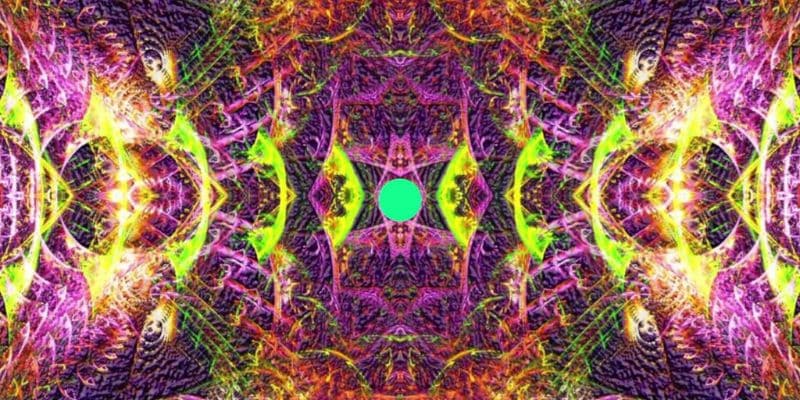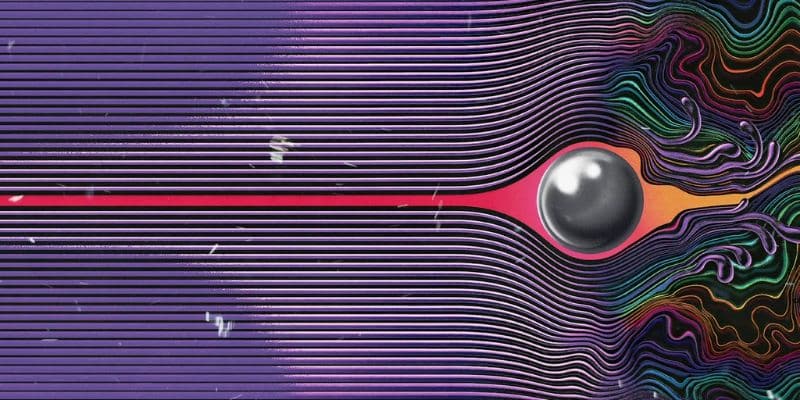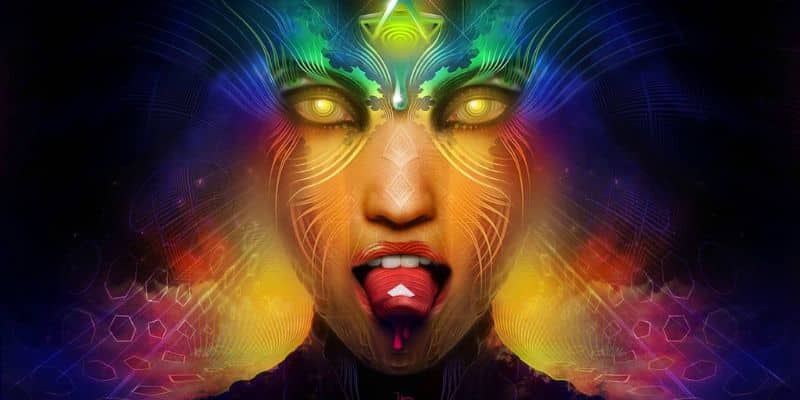Imagine music that takes your mind on a journey—sounds that make you feel like you’re floating in space or diving into a colorful dream. This is the world of psychedelic music. With its swirling melodies, hypnotic rhythms, and surreal lyrics, psychedelic music creates an experience like no other, inviting you to explore new realms of sound and thought.
So, what exactly is psychedelic music? In simple terms, it’s a genre that uses unique sounds, effects, and themes to alter your sense of reality and expand your mind. Whether through strange guitar effects, dreamy vocals, or trippy lyrics, this type of music is designed to make you feel like you’re stepping into another dimension.
In this article, you’ll discover the rich history, defining features, and lasting impact of psychedelic music. We’ll explore how it emerged, the artists who made it famous, and its influence on other genres and pop culture. Whether you’re a curious listener or a long-time fan, this journey through sound, culture, and history will give you a deeper understanding of what makes psychedelic music so extraordinary.
What is Psychedelic Music?
Psychedelic music is a type of music that aims to recreate or enhance the experience of an altered state of mind. It’s known for its unique sound, unusual song structures, and lyrics that take you beyond ordinary thinking. Whether you’re listening to dreamy melodies or deep, echoing sounds, psychedelic music is all about making you feel like you’re stepping into a different world.
Key Characteristics of Psychedelic Music
There are a few things that set psychedelic music apart from other genres. First, you’ll notice that it often uses unusual instruments and sound effects. For example, you might hear sitars (a traditional Indian instrument) or synthesizers, which create strange and otherworldly sounds. Echoes, reverb, and other effects are also used to make the music feel spaced out and surreal.
The lyrics in psychedelic music often talk about altered states of mind, surreal images, or deep philosophical ideas. They’re designed to make you think and feel in new ways. The songs also tend to have experimental structures, which means they don’t always follow the usual verse-chorus pattern. Instead, they might include long instrumental sections, unexpected tempo changes, and rhythms that shift as if you’re on a winding musical journey.
Connection with Psychedelic Experiences
Psychedelic music tries to capture the feeling of being in an altered state of consciousness. It’s meant to mimic the experience of meditation, dreaming, or even using psychedelic substances. The goal is to expand your mind, challenge your senses, and take you on a trip through sound—whether you’re simply relaxing or seeking a deeper, mind-bending experience.

The History of Psychedelic Music
The Origins
Psychedelic music began in the mid-1960s, during a time when people were experimenting with new ideas, art, and ways of thinking. It started mainly in the United States and the United Kingdom as part of the counterculture movement, which was a response to the traditional values of society. This movement was all about freedom, peace, and self-expression. At the same time, people were interested in exploring altered states of consciousness, and music became one way to express these experiences.
The early roots of psychedelic music were influenced by a mix of genres like rock, blues, folk, and even Indian classical music. For example, many psychedelic songs included Indian instruments like the sitar, which gave the music a mystical and exotic feel. The cultural setting was also important, as this style was closely tied to the hippie movement and the rise of “psychedelia,” a term used to describe the use of art, colors, and sounds that mimicked the feeling of being in an altered state.
Pioneering Bands and Artists
Many bands and artists helped shape psychedelic music in its early days. Some of the most influential ones include:
- The Beatles: When The Beatles released their album Sgt. Pepper’s Lonely Hearts Club Band in 1967, it changed the music scene forever. This album featured experimental sounds, strange lyrics, and new recording techniques, making psychedelic music more popular around the world.
- The Grateful Dead: Known for their live performances and long, improvised jams, The Grateful Dead became a symbol of the psychedelic experience. Their music was more than just songs—it was an adventure, full of unexpected twists and turns.
- Pink Floyd: Pink Floyd’s early albums, like The Piper at the Gates of Dawn, explored new sounds and created musical landscapes that felt dreamlike and surreal. Their use of strange noises and long instrumental parts made them a key part of the genre.
- Jimi Hendrix: With his electric guitar, Jimi Hendrix used effects like distortion and feedback to create a powerful, mind-bending sound. His performances, full of energy and experimentation, made him one of the most famous psychedelic rock stars.
- Jefferson Airplane, The Doors, and Other Key Players: Jefferson Airplane’s album Surrealistic Pillow and The Doors’ self-titled debut album added to the growing popularity of psychedelic music, each bringing their own unique styles to the genre.
The Psychedelic Rock Boom (1965-1969)
The peak of psychedelic music came between 1965 and 1969. During this period, many groundbreaking albums were released that defined the genre. Some of the most famous ones include:
- The Piper at the Gates of Dawn by Pink Floyd
- Electric Ladyland by The Jimi Hendrix Experience
- Surrealistic Pillow by Jefferson Airplane
- Are You Experienced by The Jimi Hendrix Experience
This era also saw the rise of iconic events like the Summer of Love in 1967, where thousands of young people gathered in San Francisco to celebrate peace, love, and music. The legendary Woodstock festival in 1969 became a defining moment for the counterculture, featuring performances from many top psychedelic bands. This period represented the peak of psychedelic music’s influence on popular culture, leaving a lasting legacy that still inspires musicians today.
The Musical Elements of Psychedelic Music
Experimentation with Sound
Psychedelic music is known for pushing the boundaries of traditional sounds, using a variety of unique instruments and studio techniques to create its distinct style. You’ll often hear unconventional instruments like the sitar, a stringed instrument from India that adds an exotic and mystical vibe, or the theremin, which produces eerie, spacey tones. Synthesizers are also common, creating sounds that feel otherworldly and futuristic.
In the studio, musicians use special effects like reverb and echo to make the music feel more spacious and dreamy. Techniques like reverse tape loops (where sounds are played backward) and phasing (which creates a sweeping effect) add to the sense of being in a different reality. These effects give the music a unique, mind-bending quality that’s perfect for taking listeners on a mental journey.
Another key element is the manipulation of tempo and rhythm. Psychedelic songs often change speed or rhythm unexpectedly, making the music feel fluid and unpredictable. Some songs may start slowly and then suddenly speed up, or shift into a completely new rhythm, reflecting the idea of a shifting, altered state of mind.
Lyrics and Themes
The lyrics in psychedelic music are just as important as the sound. Instead of telling straightforward stories, they often explore surreal and abstract themes. You might hear lyrics about the meaning of life, inner thoughts, dreams, or even imaginary landscapes. The aim is to make you think deeply or experience a sense of wonder.
Many psychedelic songs have philosophical and psychological depth, asking questions about existence, consciousness, and reality. Sometimes, the lyrics are full of symbolism and metaphors, inviting you to interpret the song in your own way. This style of lyric writing is meant to connect with your mind and emotions, encouraging you to see things from a new perspective.
Visual and Live Performance Aesthetics
Psychedelic music is not just about sound—it’s also a visual experience. During live performances, bands often use light shows and colorful visuals to enhance the music. Picture swirling lights, vibrant colors, and moving patterns that change in sync with the music. This combination of sound and visuals makes the concert feel like a total sensory experience.
The visual style of psychedelic music can also be seen in its album art. Psychedelic albums are famous for their striking and unusual covers, featuring bright colors, swirling patterns, and surreal images. The goal is to visually represent the feeling of the music—making you curious, excited, and ready to dive into the psychedelic world the artist has created.
The Decline and Revival of Psychedelic Music
The Decline (1970s)
In the early 1970s, psychedelic music began to fade in popularity. There were several reasons for this decline. One big factor was commercialization. As psychedelic music became more mainstream, it started to lose its rebellious and experimental edge. The unique style that once represented freedom and exploration was now being packaged and sold in a more predictable way.
Another reason was that social norms were changing. The excitement of the 1960s counterculture and its focus on peace, love, and mind expansion began to fade. People were facing new social and political issues, and the mood was shifting. This opened the door for new music styles like punk and disco, which offered fresh sounds and messages that matched the changing times.
Even though psychedelic music wasn’t as popular anymore, it didn’t completely disappear. Instead, it transitioned into other genres. Many elements of psychedelic music—like experimental sound effects and long instrumental sections—showed up in progressive rock bands such as Pink Floyd. Psychedelic music also influenced electronic music, as artists used studio effects to create new, spacey sounds. Later, these ideas continued to inspire alternative rock bands in the 1980s and 1990s, keeping the spirit of psychedelia alive in a new form.
The Revival (1990s-Present)
In the 1990s, psychedelic music made a comeback. This new wave of psychedelic-inspired music is often called neo-psychedelia. Modern bands took the dreamy, experimental elements of the 1960s and added their own twists. For example, bands like Tame Impala, The Flaming Lips, and MGMT mix psychedelic sounds with indie rock and pop, creating music that feels both nostalgic and fresh.
Psychedelic music has also found a new place in electronic genres like psychedelic trance, ambient, and chillwave. These styles focus on creating deep, immersive soundscapes that make you feel like you’re floating or traveling through different mental spaces. This shows how psychedelic music’s focus on altering perceptions and exploring new experiences is still influencing musicians today, even decades after its original peak.
Overall, while psychedelic music may have gone through ups and downs, its impact on music and culture has never truly disappeared—it just keeps evolving.
The Influence and Legacy of Psychedelic Music
Impact on Other Genres
Psychedelic music has had a strong impact on many modern music genres. You can hear its influence in styles like indie, shoegaze, and electronic music. Indie bands often use psychedelic elements like dreamy vocals, reverb effects, and unusual song structures to create a sound that feels both nostalgic and innovative. Shoegaze—a genre known for its layers of swirling guitars and soft, blurred vocals—takes the experimental nature of psychedelia and adds a sense of mystery and emotion.
In electronic music, psychedelic ideas have shaped genres like ambient and psychedelic trance, where the focus is on creating deep, immersive soundscapes. These styles use repetitive rhythms, hypnotic melodies, and echoing effects to take listeners on a journey through sound, much like traditional psychedelic music. So, even though the genre itself may not always be in the spotlight, its legacy is clearly felt across many musical styles today.
Cultural Impact
Psychedelic music didn’t just change how people made and listened to music—it influenced culture as a whole. It played a big role in shaping fashion, art, and literature during the 1960s and beyond. The genre’s vibrant, colorful style inspired clothing with bold patterns, tie-dye shirts, and flowing garments that became symbols of the era.
In art, psychedelic music was closely linked to the rise of psychedelic visuals, which included swirling colors, intricate patterns, and surreal images. This style was often seen on album covers and posters, making them just as eye-catching and mind-bending as the music itself. Many album covers from this era are still considered iconic works of art today.
Psychedelic Music and Modern Psychology
In recent years, there has been a renewed interest in the connection between psychedelic music and psychology, especially in the area of psychedelic therapy. Researchers are exploring how substances like psilocybin (found in magic mushrooms) can be used to help people with conditions like anxiety, depression, and PTSD. During these therapy sessions, carefully chosen psychedelic music is often used to guide the experience.
The music serves as a backdrop, helping to set the mood and encouraging deep emotions and self-reflection. It can create a safe, supportive space for people to explore their thoughts and feelings, making the therapeutic effects even stronger. This shows that psychedelic music, even after all these years, still has a powerful role to play—not just in entertainment, but in healing and mental health as well.

Exploring Psychedelic Music Today
Modern Psychedelic Music
Psychedelic music is still very much alive today, with many modern bands and artists keeping the genre fresh and exciting. One of the most well-known contemporary acts is Tame Impala, led by musician Kevin Parker. His music blends dreamy melodies, echoing vocals, and trippy sounds, making it a perfect example of modern psychedelic rock. Another popular band is King Gizzard & The Lizard Wizard, known for their unpredictable styles and albums that explore everything from rock to jazz, always with a psychedelic twist.
There are also many smaller bands that embrace the spirit of psychedelia, like The Flaming Lips, who create colorful, imaginative music full of surreal lyrics and experimental sounds. These artists show that psychedelic music is not just a style from the past—it continues to evolve and inspire new generations.
Music Festivals
If you want to experience psychedelic music in its full glory, music festivals are a great place to start. One of the best-known festivals for psychedelic music is Desert Daze in California. This festival focuses on all things psychedelic, featuring a mix of old and new bands, along with art installations and visuals that make the experience truly immersive.
Another festival worth checking out is Levitation, which takes place in Austin, Texas. It’s named after a famous 1960s band called The 13th Floor Elevators, one of the pioneers of psychedelic rock. At Levitation, you can hear a wide range of psychedelic styles, from mellow, dreamy tunes to loud, energetic jams.
These festivals are more than just concerts—they’re experiences designed to take you on a musical and visual journey.
How to Get into Psychedelic Music
If you’re new to psychedelic music, you might wonder where to begin. A good way to start is by listening to some classic albums that define the genre, as well as a few modern ones that show how it has evolved.
Here are a few recommendations:
- Classic Albums:
- Sgt. Pepper’s Lonely Hearts Club Band by The Beatles
- The Piper at the Gates of Dawn by Pink Floyd
- Electric Ladyland by Jimi Hendrix
- Modern Albums:
- Lonerism by Tame Impala
- Nonagon Infinity by King Gizzard & The Lizard Wizard
- Yoshimi Battles the Pink Robots by The Flaming Lips
These albums offer a good mix of sounds and styles, giving you a taste of both the roots and the current state of psychedelic music.
Creating Your Own Psychedelic Experience
To truly enjoy psychedelic music, try setting up the right environment for listening. You don’t need much—just a comfortable space, the right mindset, and maybe some cool lighting. Dim the lights or use a small lamp to create a soft glow. If you have them, LED lights or a lava lamp can add a dreamy vibe.
You can also try listening with headphones, which will help you hear all the small details in the music. Close your eyes, relax, and let the sounds take you on a mental journey. The key is to keep an open mind and enjoy the experience without distractions.
Exploring psychedelic music is about more than just listening—it’s about immersing yourself in the sounds and letting your imagination wander. Whether you’re listening to the classics or discovering new artists, it’s a genre that always has something surprising to offer. Enjoy the trip!
Conclusion
Psychedelic music is a genre that has come a long way since its beginnings in the 1960s. It started as an experimental style that pushed the boundaries of sound and explored new ideas about music and consciousness. Over the years, it influenced many other genres like progressive rock, electronic music, and indie, leaving a lasting mark on the music world. Today, modern bands like Tame Impala and King Gizzard & The Lizard Wizard continue to keep the psychedelic spirit alive, adding new twists and flavors to the genre.
The timeless appeal of psychedelic music comes from its ability to take you on a journey, whether through its surreal lyrics, trippy sounds, or mind-bending rhythms. It’s a style that encourages you to open your mind and see the world in a different way. As the genre continues to evolve, it remains a source of inspiration and creativity for both artists and listeners.
If you haven’t yet explored psychedelic music, now is the perfect time to start. Pick a classic album, try out a few modern tracks, or even create your own ideal listening environment. Let the music guide you on a unique adventure and see where it takes you!

